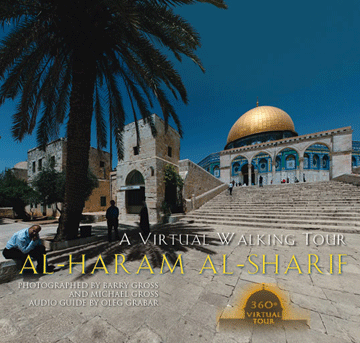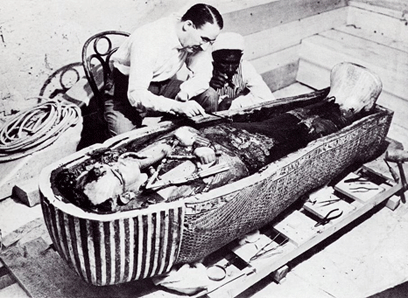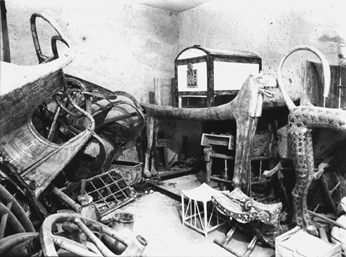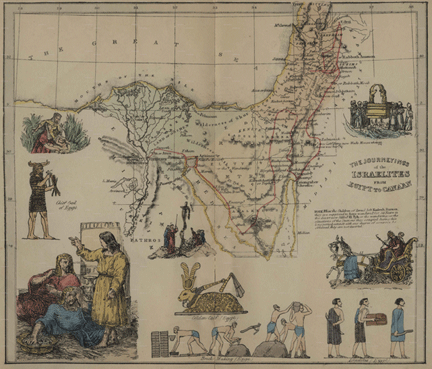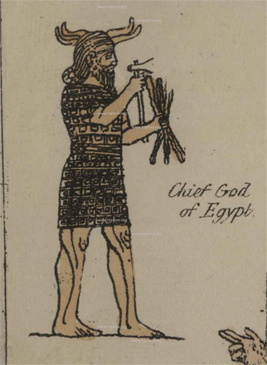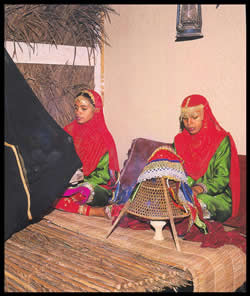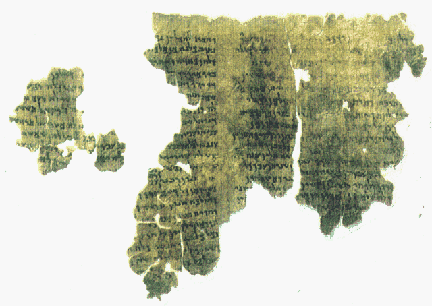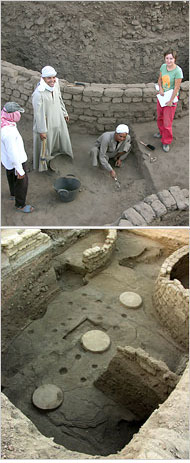
Parts of an administration building, above, and a large silo, top, at the site of an ancient provincial capital on the Upper Nile; Top, N.Moeller/Tell Edfu Project; above, G. Marouard/Tell Edfu Project.
By JOHN NOBLE WILFORD, The New York Times, July 1, 2008
Archaeologists have long fixed their sights on the grandeur that was ancient Egypt, the pyramids, temples and tombs. Few bothered to dig beneath and beyond the monumental stones for glimpses into the living and working spaces of ordinary Egyptians.
That is changing slowly but steadily. In the last two or three decades, excavations have uncovered urban remains and swept aside the conventional wisdom that the Egypt of the pharaohs, in contrast to Mesopotamia, was somehow a civilization without cities.
“We can now confirm that this was not the case,†said Nadine Moeller, an Egyptologist at the Oriental Institute of the University of Chicago. Dr. Moeller was speaking of her own recent findings, as well as those of other excavators who practice what is known as settlement archaeology. Continue reading Uncovering Evidence of a Workaday World Along the Nile →

